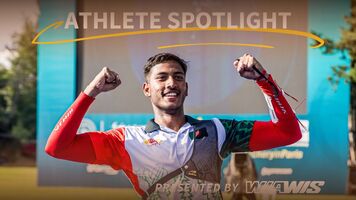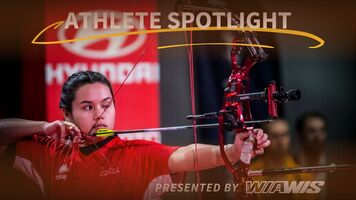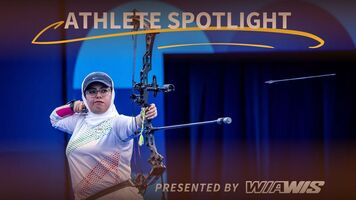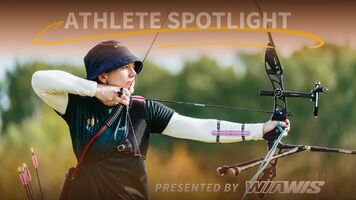Four perspectives: Archery in Rio’s iconic Sambódromo

Rio de Janeiro, host city for the 2016 Olympics and Paralympics, has begun to host its first big international archery event – as part of the Aquece Rio test series for the Games.
From Portugese to English, the name translates as “warm-up”. It’s a chance for the organising committee to test 28 of its departments, one year ahead of the main event. For the 120 athletes from 27 nations, it’s a taster of what the Games will feel like in 2016.
The hometown hero

Seventeen-year-old Marcus D’Almeida became one of Brazil’s biggest hopes for a medal at the nation’s home Games after he finished second at the Nanjing 2014 Youth Olympic Games. Two weeks after that, Marcus also won silver at the Archery World Cup Final in the Olympic Capital of Lausanne.
After a rough beginning to the 2015 archery season, Marcus made some changes to his equipment. The alterations clearly worked, as he became Brazil’s first World Archery Youth Champion in June in Yankton, United States.
Born in Maricá – one hour away from Rio – Marcus is a local star.
“I’m really excited to be at my first international archery event in Brazil, my home country,” he admitted.
The Olympic venue: The Sambódromo – an iconic location, built in 1984, where the Carnival of Rio de Janeiro concludes each February.
Located in the north of the city on Marquês de Sapucaí Avenue and surrounded by favelas, the Sambódromo has traded in its usual role – as the stage for the festival’s colourful costumes, music and dancing – to host archery. (During the Games, it will also act as the finishing line for the marathon.)
“Archery is not so popular in Brazil right now,” explained Marcus. “But I think the Sambódromo will bring some extra attention. It’s starting to look really nice.”
The Olympic Champion

In 2014, reigning Olympic Champion Ki Bo Bae didn’t made the Korean team. She spent the season acting as an analyst for Korean television. It was an experience Ki said paid off, and gave her a new perspective on her life as an international athlete.
Bo Bae became World Archery Champion at Copenhagen 2015 – and was part of the recurve women’s team that won a full team quota place for Rio 2016. Korea has won every Olympic gold in the women’s team event since it was introduced.
Shooting in the Sambodromo, Ki Bo Bae had flashbacks to her Olympic gold medal winning performance.
“Just as I was for the Games in London, I’m really excited – and nervous too,” said Ki. “I don’t know much about the Brazilian culture but this place looks nice to me.”
Thirty out of the 120 athletes – 64 men and 55 women – competing at the Aquece Rio International Archery Challenge in Rio also participated at the London Olympic test event in 2011.
The Olympic hopeful

Sjef van den Berg, Rick van der Ven and Jan van Tongeren – the Netherlands team at the test event – were joined by observer Mitch Dielemans, who shot at the fourth Archery World Cup stage, in Rio.
“It’s an honour be here,” said Sjef, who took silver at the first European Games in 2015.
“This is the first step for me to get used to the field and to the circumstances. I have heard about the Sambodromo and I have seen the 3D pictures of how it will look next year. I think it’s great so far.”
Other Olympic hopefuls gathering experience at the test event: David Pasqualucci, Choi Misun, Kang Chae Young and Collin Klimitchek.
The observer

Compounder John Stubbs from Great Britain’s Paralympic team made the long trip to Rio de Janeiro to observe the arena in which the paras will also compete in during Rio 2016.
John was seen wheeling his wheelchair up and down the ramps and around the venue to check access.
“It’s very bright! Hot, amazingly hot,” said the Beijing 2008 Paralympic Champion. “Obviously the concrete is generating even more heat – but for me, it’s more about the light that is reflecting back at me.”
“Shooting on the platforms is something we also had to deal with in London. It’s actually was I was expecting.”
Some of the top ranked recurve para archers in the world were also invited to shoot in a scratch team in the Sambódromo for the test event, so organisers could get a better idea of any other requirements for the Paralympic Games.














